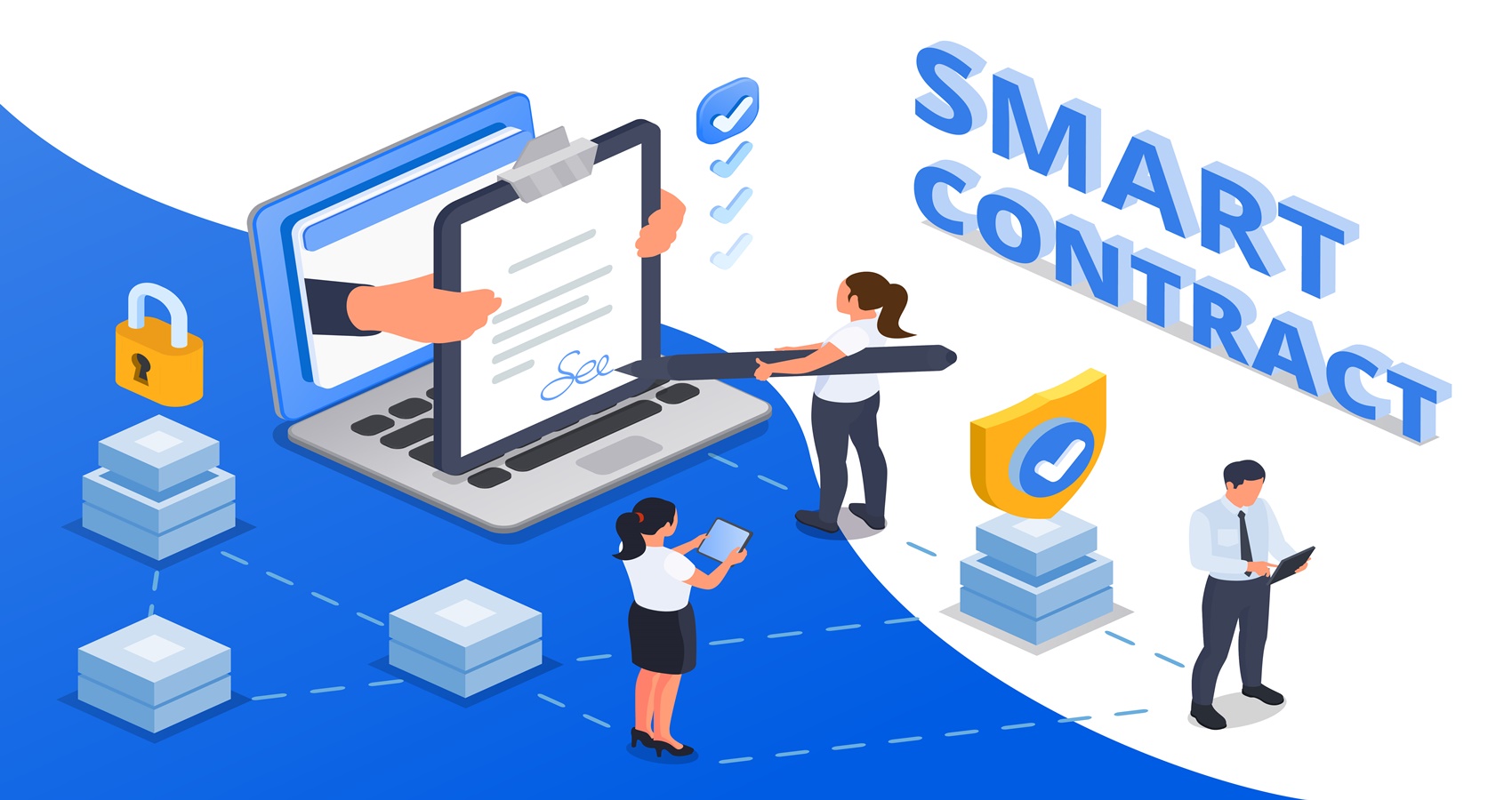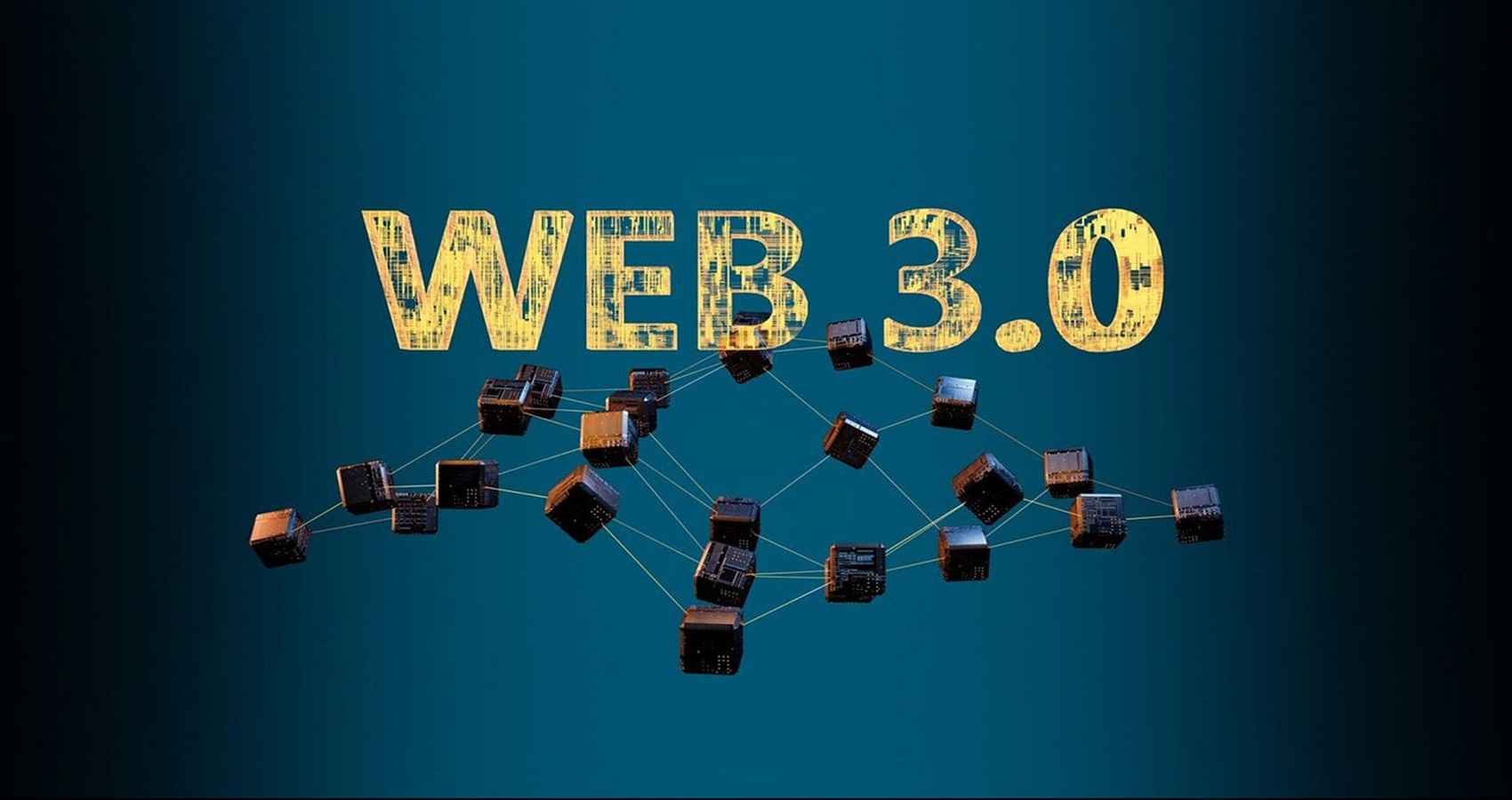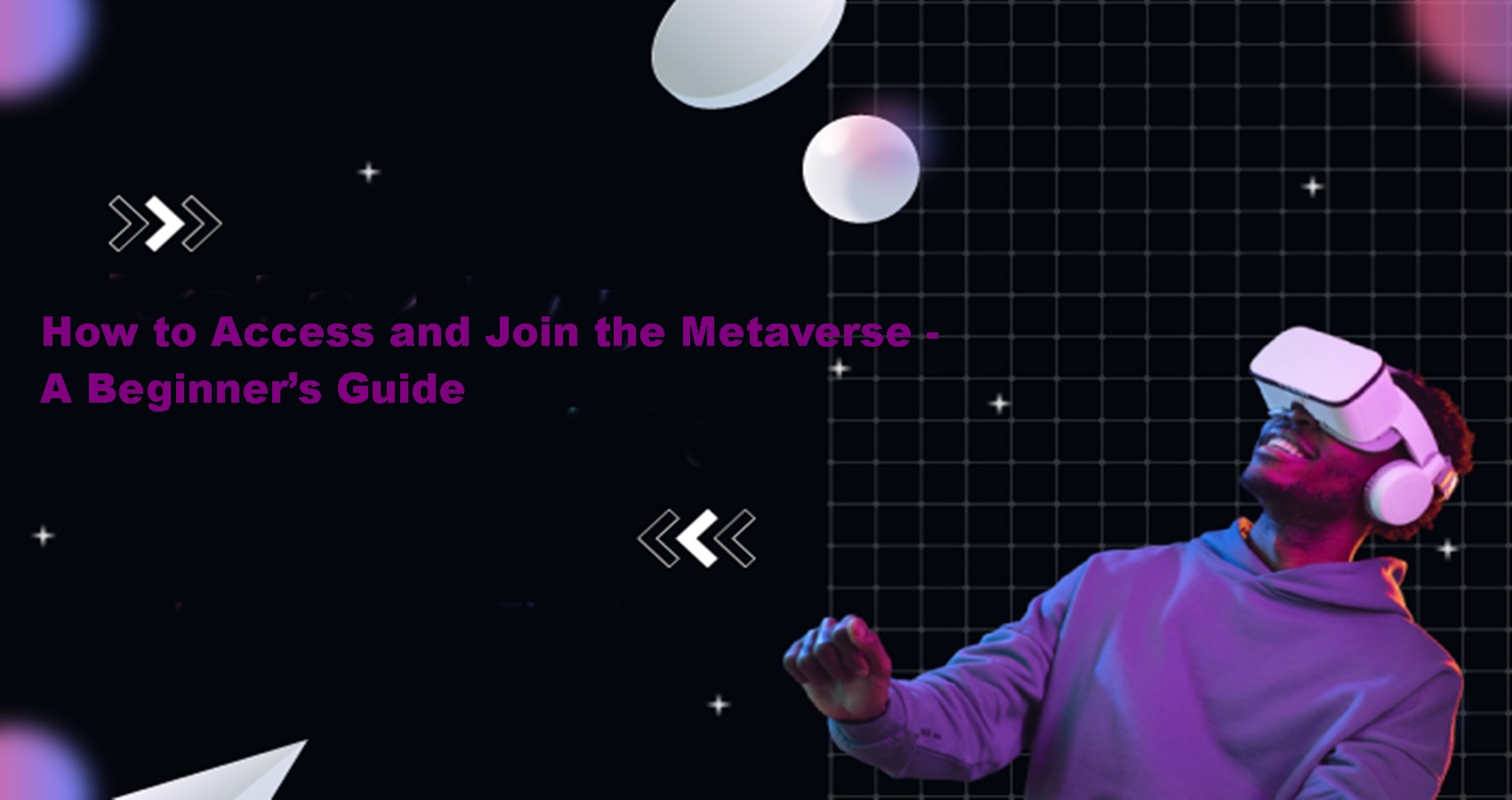The real estate industry is ripe for disruption by blockchain-based smart contracts that can automate cumbersome manual processes. Smart contracts allow asset transfers, payments, and contract executions to occur transparently based on immutable code. In this comprehensive guide, we explore: Let’s examine how smart contracts are bringing new levels of speed, efficiency, and transparency to real estate markets! Benefits of Using Smart Contracts in Real Estate Smart contracts unlock several advantages in real estate transactions: Faster Closings – Automated verification and transfers cut days or weeks from time-intensive closings. Lower Fees – By removing middlemen, smart contracts reduce commissions and fees. Global Access – Tokenized fractional real estate ownership opens investments to worldwide participants. Transparency – All transaction history and ownership is visible on blockchain ledgers. Accuracy – Smart contracts help eliminate human error in paperwork and compliance. Payment Automation – Smart contracts can automatically collect and distribute rental income, HOA fees etc. Regulatory Compliance – Identity verification and transaction monitoring requirements are inbuilt. Mortgage Automation – Loan servicing, payments, and release can happen automatically based on preset contract conditions. These benefits incentivize adoption by various real estate stakeholders from investors to regulators. Key Areas of Real Estate Transaction Automation Many aspects of real estate transactions can be adapted to smart contract automation: Asset Tokenization – Properties can be converted to tradeable tokens on blockchain that represent fractional ownership. This provides liquidity for large assets. Title Transfers – Conveying deed and title changes hands securely with an immutable record through blockchain transactions. Rental Agreements – Smart contract functions automate rent payments on intervals and handle deposits/terminations automatically. Maintenance Logging – Service providers record maintenance events directly on blockchain for transparent property management history. Mortgage Servicing – Mortgage payments, lien releases, and interest accruals occur automatically based on loan terms in the smart contract code. Property Registration – New properties can be issued verified blockchain registry records that simplify onboarding and transfer. Escrow – Smart contract escrows protect buyer funds preventing release to seller until all conditions like inspections are satisfied. Property Taxes – Smart contracts connect to payment systems to automatically pay recurring property taxes or HOA fees. The real estate transaction lifecycle is filled with contractual interactions well suited to smart contract automation. Companies Using Smart Contracts in Real Estate Many promising companies are already applying smart contracts to streamline real estate: These innovators prove the appetite for blockchain’s benefits across the real estate ecosystem. Technical Architecture for Smart Contract Real Estate Platforms Here is one approach to architecting an end-to-end real estate platform with smart contracts: User Application – The frontend application where buyers, seller, agents, landlords, and tenants interact to manage listings, transactions, and rentals. Marketplace Contracts – Smart contracts that encode listing creation rules, bidding logic, atomic swaps, and other market-specific conditions. Property Tokens – Unique blockchain tokens are generated to represent legal ownership of each property or fraction being transacted. Title Registry – A contract storing indexed data on property identities, ownership history, and other metadata that must be updated on transfers. Payment Channels – Integrations with payment processors like Stripe allow automated transfers linked to events in smart contracts. Identity Oracle – External identity verification services feed into smart contracts like background checks before transfers. Deed Storage – Off-chain encrypted storage handles documents like title deeds, inspection reports, tenant agreements that may be linked to on-chain records. Blockchain Network – An underlying high performance blockchain that hosts the smart contracts and ensures data integrity. Combining these elements allows end-to-end digital real estate lifecycle management with automated contracts. Integrating IoT Sensors with Smart Buildings Smart contracts also offer automation possibilities when paired with IoT sensors in connected buildings and spaces: Embedding analytics and business logic using smart contracts creates intelligent programmable spaces that minimize human intervention. Legal Considerations for Blockchain Real Estate Despite the automation benefits, open legal questions exist around blockchain real estate: Resolution on these issues will provide greater legal clarity and unlock irreversible modernization of outdated real estate transaction practices. The Future of Smart Contracts in Real Estate Here are some predictions on how smart contracts may transform real estate transactions in coming years: As smart contract platforms mature and gain mainstream adoption, real estate and construction stand to be fundamentally upgraded into a more open, efficient and innovative sector. Conclusion Smart contracts are primed for large scale disruption across the vast real estate sector. Automating convoluted paperwork-driven processes using transparent and tamper-proof programmatic contracts based on blockchain data represents a major leap forward. Integrating IoT sensor analytics and payments into smart buildings and spaces unlocks further possibilities for streamlining property operations. Smart contract innovation will continue shifting power and efficiency into the hands of investors, buyers, sellers, tenants, and regulators. The real estate transactions of the future are being coded today.
How Web3 and Blockchain Are Shaping the Emerging Metaverse
The “metaverse” vision encompasses interconnected 3D virtual worlds where users can work, play, socialize and transact as avatars. Major tech companies are investing heavily into metaverse development. However, early virtual worlds have been closed siloed ecosystems. Integrating Web3 and blockchain technology promises to make emerging metaverses open, user-driven economies by enabling self-custody of virtual assets, payments, decentralized finance, and collective governance. In this comprehensive guide, we examine: Let’s explore this symbiotic fusion of metaverses and Web3 set to reshape our digital lives in the coming decade! What Web3 and Blockchain Bring to Metaverses Web3 represents a conceptual vision of a user-driven internet enabled by blockchain, decentralization, and token-based economics. Integrating Web3 technologies can bring greater user agency, creativity, transparency, accessibility and interoperability to metaverse environments through: Distributed Ledgers – Activity tracking and data persistence without central servers via shared tamper-proof ledgers Cryptocurrencies – Native virtual economy and transactions using cryptocurrency tokens and blockchain wallets Smart Contracts – Programmatic agreements enabling complex virtual world logic and mechanics Non-Fungible Tokens – Proof of unique digital asset ownership like land, avatars, items etc. as NFTs DAOs – Decentralized autonomous organizations for participatory governance and funding models Consensus Mechanisms – Democratic conflict resolution and collective decision-making through token voting Interoperability – Seamless identity, assets, and payments mobility across different metaverse worlds By aligning virtual worlds with Web3 architecture, users gain broader freedoms and control while participating in carefully designed economic networks that incentivize value creation. Benefits Over Centralized Metaverse Platforms Web3 metaverses offer marked advantages over closed platforms: Persistent Worlds – Metaverses exist continuously rather than at the mercy of company decisions or technical issues. User-Owned Economies – Participants collectively own and govern metaverse economies rather than centralized corporate interests. Platform Interoperability – Users can freely move avatars, possessions, and accumulated value across platforms rather than siloed captive markets. Creator Earnings – Real ownership of digital creations allows earning money directly from other users rather than platform revenue share models. Transparency – Activity and history on public blockchains are viewable rather than opaque platform algorithms and politics. Trustless Exchange – Value exchange using crypto between users without intermediary oversight or rent extraction. Self-Sovereign Identity – Users fully own avatars, profiles, and reputation across worlds rather than platform IP. Consensus-Based Governance – Changes and policies result from stakeholder consensus rather than unilateral platform decisions. These factors empower metaverse citizens over platforms while retaining community alignment incentives baked into Web3 economic designs. Integrating NFTs for Digital Asset Ownership Non-fungible tokens (NFTs) enabled by blockchain allow proof of unique ownership over digital assets like art, collectibles, virtual land, avatars, and more. NFT integration is key for user agency in Web3 metaverses through: Virtual Real Estate – Parcels of metaverse land and structures can be bought and sold as NFTs using cryptocurrency. Avatar Customization – In-world costumes, accessories, skins, and attire can be owned and traded as unique NFTs. Collectibles – Special in-game artifacts, cards, and unique items become owned as NFTs. Virtual Concert Tickets – Event tickets sold as NFTs prove attendance and unlock experiences while preventing scalping and fakes. Domain Names – Blockchain domain NFTs create human readable addresses for virtual world spaces. Badges – Special NFT badges could represent achievement or status within metaverses. With NFT ownership rather than renting temporary access, metaverse citizens hold real stake and incentives to participate. Implementing DAO Governance Decentralized autonomous organizations (DAOs) enabled by Web3 tools allow metaverse communities to govern collectively outside traditional corporate structures through: Stake-Weighted Voting – Community members holding governance tokens get proportional voting sway on proposals. Development Funding – Treasury funds controlled by DAOs incentivize contributors through grants and bounties. Conflict Arbitration – Problems like virtual harassment can be collectively adjudicated on rather than top-down moderation. Virtual Services – Utilities, infrastructure, libraries can be maintained as decentralized commons through DAOs. Metaverse Standards – Technical and social protocols get established democratically rather than unilaterally. Shared Resources – Joint ownership of virtual assets like transportation networks, architectural assets. Treasuries – Pooled funds transparently managed by communities to subsidize growth and development. Through DAOs, metaverse citizens can democratically shape experiences and economies in an aligned way not possible with centralized control. Early Metaverses Adopting Web3 Models Some promising metaverse projects already leverage Web3 and blockchain: The Sandbox – Voxel gaming metaverse where users can own NFT land parcels and create blockchain games and assets. Decentraland – 3D social metaverse platform using the Ethereum blockchain for digital asset ownership and transactions. Cryptovoxels – Virtual world with player-owned stores, parcels, and collectibles recorded transparently on blockchain. Somnium Space – Persistent open world metaverse built on blockchain allowing users to own land/structures and customize avatars. Otherside – Upcoming metaverse from Yuga Labs, the creators of the Bored Ape NFT collection with strong Web3 integrations. More metaverses are taking cues from Web3 to harness user incentives and communities. Crypto Wallets and Identity in Web3 Metaverses Unlike traditional gaming profiles, Web3 metaverse users leverage decentralized digital wallets and identity: Self-Custody – Users fully control their own virtual assets and currency through blockchain wallets rather than platform custody. Cross-World Identity – Profiles, avatars, possessions persist as the same identity across metaverses rather than isolated per platform. Reputation Portability – Building up reputation, relationships, and social proof carries across worlds when identity is decentralized. Payments Freedom – Users transact freely person-to-person using cryptocurrency and blockchain wallets without platform fees or limits. User-Managed Privacy – Users choose what data to disclose from their wallets selectively depending on context rather than broad terms of service agreements. Access Flexibility – Wallet keys give users access to their metaverse identity anywhere rather than platform-constrained logins. With user sovereignty over their own metaverse identities and assets, participation thrives. Obstacles Facing Blockchain Metaverse Adoption Some key challenges remain for integrating Web3 models with virtual worlds: Despite obstacles, ecosystem development and technology advancement bring Web3 metaverses steadily closer to reality each day. The Future of Blockchain-Based Metaverses Here are several predictions on how Web3 and metaverses converge in the next
How to Access and Join the Metaverse – A Beginner’s Guide
The metaverse concept has captured public imagination and is poised to be the next major evolution of the internet. Virtual worlds where we can work, play, connect, and create limitlessly are coming closer to reality every day. But for those unfamiliar, how does one actually go about entering and participating in these emerging metaverse environments? In this comprehensive guide, we provide everything you need to know to dive in, including: Let’s explore how anyone can start accessing the metaverse today and help shape the growth of this exciting new digital frontier! What Does the Metaverse Mean? The “metaverse” refers to persistent 3D virtual worlds where users can explore new realities together and connect in new ways through custom avatars. While still early, some key aspects include: While still maturing, rich digital realms through connected virtual worlds are coming. Anyone can start entering the metaverse even in its early state. Existing Metaverse Worlds You Can Join If you want to jump into the metaverse today, here are some of the most developed platforms available now: Decentraland Browser-based 3D metaverse with virtual real estate NFTs, avatar creation, gambling, concerts and scenic areas to explore. Also has a mobile app. How to Join – Create a free account and use keyboard/mouse or VR headset to enter Decentraland. Customize your avatar. The Sandbox 3D voxel metaverse focused on gaming where you can build structures and environments like Minecraft as well as buy branded virtual land. How to Join – Download Sandbox mobile app on iOS/Android or use a VR headset to enter, customize an avatar, and start playing. Cryptovoxels Virtual world built on Ethereum blockchain where players can buy land parcels as NFTs, visit stores, galleries, hangouts and games made by users. How to Join – Create an account and access Cryptovoxels through desktop browser or VR headset to explore the voxel world. Somnium Space Persistent open world VR platform akin to a dystopian city. You can customize your avatars, own land, host events, and fly between “parcels”. How to Join – Download their cube launcher client to register and launch into Somnium Space with a compatible VR headset. Mozilla Hubs Browser-based 3D spaces by Mozilla that users can customize themselves or attend events at without requiring VR headsets. Has easy building tools. How to Join – Make a free Mozilla account, pick an avatar and username, and enter any public or private Hubs space through your desktop browser. These platforms demonstrate the expanding possibilities in existing metaverse worlds today that you can become part of. Acquiring Your Metaverse Hardware and Identity To fully engage with more advanced metaverses, you’ll need: Compatible VR Headset While some browser-based worlds support desktop play, VR headsets add vital immersion through lifelike perspective and interaction. Popular options include: You don’t need the highest end headset to explore basic metaverse worlds. Base headsets start under $400. Digital Wallet To manage virtual assets and identity, you’ll need a blockchain-compatible digital wallet like: These provide your passport to transacting and participating in metaverse economies. What You Can Do in Popular Metaverse Worlds Once set up, here are some of the current activities possible across metaverse platforms: Socialize – Meet up with friends or join events and explore together. Voice chat is common. Build – Many worlds enable creating structures and artwork you can show off using simple building tools. Shop – Buy virtual assets like clothing to customize your avatar using crypto currencies. Play Games – Some worlds feature arcade games where you can win tokens, including multiplayer games. Buy Virtual Land – Purchase land parcels or spaces as NFTs using cryptocurrency, to host creations. Attend Events – Developers and brands are hosting virtual meetups, concerts, talks and conventions inside metaverses. Gamble – Some worlds feature casinos where you can play games like poker or slots using crypto coins. The options continue expanding as more users join and add their own creativity. Major Upcoming Metaverses to Watch While today’s worlds remain basic, major brands are developing expansive metaverses on the horizon: Meta Horizon – Facebook’s social metaverse in beta where users can explore, play games, and build together as customizable avatars. Otherside – Upcoming Web3 metaverse from Yuga Labs, builders of Bored Ape NFTs, promising immersive gaming and content. Illuvium – Forthcoming open world fantasy RPG metaverse with AAA-quality graphics, battles, and NFT components. Star Atlas – In development multiplayer metaverse set in space in the year 2620 with a player-driven economy. The Matrix World – A multiplayer metaverse being built by Warner Bros. tied to The Matrix film franchise. Major brands plus dedicated metaverse-first startups are pushing virtual worlds forward into more expansive and immersive experiences. Metaverse Cost Considerations Like any new technology, accessing the metaverse today has costs around hardware and use: VR Headsets – All-in headset costs including a compatible computer range from ~$800 on the more affordable end to $2000+ for high end setups. In-World Purchases – Transactions for assets, clothing, customization and land parcels using crypto can range from a few dollars to thousands. Virtual Real Estate – Purchasing virtual land and private spaces can get expensive depending on the platform. Some Decentraland parcels have sold for $1 million+. Taxes – Some metaverse worlds impose platform fees, taxes, and royalties on certain virtual transactions and activities. Computer Hardware – To run VR experiences requires sufficiently powerful desktops/laptops which might necessitate upgrades. Over time, as adoption grows and technology advances, metaverse access costs are expected to decrease considerably making it more egalitarian. But early adopters pay premium prices. The Future of Metaverse Accessibility While still early days, we expect several innovations to expand metaverse accessibility down the road: More Cross-Platform Experiences Today each metaverse world is largely siloed. New tools will allow teleporting avatars and taking digital assets across metaverses seamlessly. Improved Mobile Integration 5G networks, mobile VR headsets, and cross-platform wallets will enable interacting with metaverse environments easily from mobile devices. Democratized Creation Tools Intuitive no-code creation tools will empower everyday users to help build
Top 10 Artificial Intelligence Companies in India to Watch in 2024
India has rapidly emerged as a global hub for artificial intelligence technology and solutions. Several homegrown startups have achieved unicorn status while MNCs are ramping up Indian AI investments. In this comprehensive guide, we explore the top 10 AI companies in India making waves currently and projected to grow in 2024: Overview of India’s AI Industry India’s artificial intelligence industry has seen tremendous growth recently for several reasons: NITI Aayog predicts AI could add $1 trillion to India’s GDP by 2035. With so much potential, major investments are flowing into promising Indian AI startups and initiatives by tech giants. Let’s examine 10 leading companies at the forefront currently. Top 10 Artificial Intelligence Companies in India 1. Tata Consultancy Services Tata Consultancy Services (TCS) is one of the largest IT services companies in India. It offers a comprehensive suite of AI services and solutions leveraging key partnerships. Key AI Offerings: TCS also established an AI training program to upskill 150,000 consultants by 2020. Its scale and breadth make TCS an AI leader in India. 2. Infosys Another Indian IT pioneer, Infosys offers a multitude of AI services through its Applied AI practice to global enterprises. Key AI Offerings: Infosys leverages AI to enhance its own operations as well as client transformations. 3. Haptik Haptik is a popular conversational AI startup providing chatbot and virtual assistant solutions to clients that receives over 3 billion conversations annually. Key AI Offerings: Haptik was acquired by Reliance Jio in 2019 at a $100 million valuation demonstrating its solutions quality. 4. Niki.ai Niki.ai offers a multi-channel AI assistant platform for enterprises to automate conversations at scale. It has processed over 2 billion interactions. Key AI Offerings: Niki.ai caters to major Indian businesses like HDFC Life, Bajaj Finserv and Tata Capital. 5. Manthan Manthan excels at providing AI-powered analytics and marketing services tailored for the retail and consumer industry. Key AI Offerings: Manthan’s industry focus has secured clients like Lenovo, Lenskart and Singapore Airlines. 6. SigTuple SigTuple leverages medical AI to analyze visual medical data and make accurate diagnostic predictions. Its AI screens over 1 million patients each month. Key AI Offerings: SigTuple is revolutionizing medical testing in India and received funding from Accel and IDG Ventures. 7. Fractal Analytics Fractal Analytics is an AI solutions company offering tools, platforms, and consulting around developing enterprise AI capabilities at scale. Key AI Offerings: Fractal has delivered over 1,500 AI engagements with a valuation of over $1 billion. 8. Luminous Computing Luminous develops AI acceleration solutions tailored for edge computing applications across industries like manufacturing, retail, automotive etc. Key AI Offerings: Luminous empowers companies to run AI locally without cloud reliance. Qualcomm and Samsung have invested in this promising startup. 9. Active.Ai Active.Ai offers conversational AI banking solutions used by over 90 financial institutions worldwide handling millions of customer interactions. Key AI Offerings: Active.Ai counts fintech leaders like Axis Bank, HDFC Securities, and Kotak Mahindra among its clients. 10. Intelliseq Intelliseq builds enterprise-grade AI solutions specialized in automation, personalization, and predictive analytics for sales and marketing teams. Key AI Offerings: Intelliseq’s clients include Decathlon, Puma, Asian Paints and other major brands. The Future of AI in India Given the investments and quality of talent, India is poised to become a dominant force in global artificial intelligence in the years ahead. More multinationals will develop R&D centers here while homegrown startups gain international reach. With prudent policymaking, ethical oversight and a developer community committed to social good, AI can massively benefit sectors from agriculture to healthcare and beyond in India. The stage is set for radical positive transformation. Conclusion India has rapidly emerged as a hub for world-class artificial intelligence innovation and adoption. Our analysis of the top 10 AI companies in India only scratches the surface of the exciting developments happening across industries. From AI chips to predictive analytics to intelligent assistants, Indian startups are showing impressive expertise across the spectrum of AI capabilities. Collaboration between academia, government and industry can accelerate advancement. With the responsible use of automation and intelligence amplification through AI, India has the opportunity to make groundbreaking progress improving livelihoods and enabling humans to maximize creativity and productivity.
How to Access and Join the Metaverse – A Beginner’s Guide
The metaverse concept has captured public imagination and is poised to be the next major evolution of the internet. Virtual worlds where we can work, play, connect, and create limitlessly are coming closer to reality every day. But for those unfamiliar, how does one actually go about entering and participating in these emerging metaverse environments? In this comprehensive guide, we provide everything you need to know to dive in, including: Let’s explore how anyone can start accessing the metaverse today and help shape the growth of this exciting new digital frontier! What Does the Metaverse Mean? The “metaverse” refers to persistent 3D virtual worlds where users can explore new realities together and connect in new ways through custom avatars. While still early, some key aspects include: While still maturing, rich digital realms through connected virtual worlds are coming. Anyone can start entering the metaverse even in its early state. Existing Metaverse Worlds You Can Join If you want to jump into the metaverse today, here are some of the most developed platforms available now: Decentraland Browser-based 3D metaverse with virtual real estate NFTs, avatar creation, gambling, concerts and scenic areas to explore. Also has a mobile app. How to Join – Create a free account and use keyboard/mouse or VR headset to enter Decentraland. Customize your avatar. The Sandbox 3D voxel metaverse focused on gaming where you can build structures and environments like Minecraft as well as buy branded virtual land. How to Join – Download Sandbox mobile app on iOS/Android or use a VR headset to enter, customize an avatar, and start playing. Cryptovoxels Virtual world built on Ethereum blockchain where players can buy land parcels as NFTs, visit stores, galleries, hangouts and games made by users. How to Join – Create an account and access Cryptovoxels through desktop browser or VR headset to explore the voxel world. Somnium Space Persistent open world VR platform akin to a dystopian city. You can customize your avatars, own land, host events, and fly between “parcels”. How to Join – Download their cube launcher client to register and launch into Somnium Space with a compatible VR headset. Mozilla Hubs Browser-based 3D spaces by Mozilla that users can customize themselves or attend events at without requiring VR headsets. Has easy building tools. How to Join – Make a free Mozilla account, pick an avatar and username, and enter any public or private Hubs space through your desktop browser. These platforms demonstrate the expanding possibilities in existing metaverse worlds today that you can become part of. Acquiring Your Metaverse Hardware and Identity To fully engage with more advanced metaverses, you’ll need: Compatible VR Headset While some browser-based worlds support desktop play, VR headsets add vital immersion through lifelike perspective and interaction. Popular options include: You don’t need the highest end headset to explore basic metaverse worlds. Base headsets start under $400. Digital Wallet To manage virtual assets and identity, you’ll need a blockchain-compatible digital wallet like: These provide your passport to transacting and participating in metaverse economies. What You Can Do in Popular Metaverse Worlds Once set up, here are some of the current activities possible across metaverse platforms: Socialize – Meet up with friends or join events and explore together. Voice chat is common. Build – Many worlds enable creating structures and artwork you can show off using simple building tools. Shop – Buy virtual assets like clothing to customize your avatar using crypto currencies. Play Games – Some worlds feature arcade games where you can win tokens, including multiplayer games. Buy Virtual Land – Purchase land parcels or spaces as NFTs using cryptocurrency, to host creations. Attend Events – Developers and brands are hosting virtual meetups, concerts, talks and conventions inside metaverses. Gamble – Some worlds feature casinos where you can play games like poker or slots using crypto coins. The options continue expanding as more users join and add their own creativity. Major Upcoming Metaverses to Watch While today’s worlds remain basic, major brands are developing expansive metaverses on the horizon: Meta Horizon – Facebook’s social metaverse in beta where users can explore, play games, and build together as customizable avatars. Otherside – Upcoming Web3 metaverse from Yuga Labs, builders of Bored Ape NFTs, promising immersive gaming and content. Illuvium – Forthcoming open world fantasy RPG metaverse with AAA-quality graphics, battles, and NFT components. Star Atlas – In development multiplayer metaverse set in space in the year 2620 with a player-driven economy. The Matrix World – A multiplayer metaverse being built by Warner Bros. tied to The Matrix film franchise. Major brands plus dedicated metaverse-first startups are pushing virtual worlds forward into more expansive and immersive experiences. Metaverse Cost Considerations Like any new technology, accessing the metaverse today has costs around hardware and use: VR Headsets – All-in headset costs including a compatible computer range from ~$800 on the more affordable end to $2000+ for high end setups. In-World Purchases – Transactions for assets, clothing, customization and land parcels using crypto can range from a few dollars to thousands. Virtual Real Estate – Purchasing virtual land and private spaces can get expensive depending on the platform. Some Decentraland parcels have sold for $1 million+. Taxes – Some metaverse worlds impose platform fees, taxes, and royalties on certain virtual transactions and activities. Computer Hardware – To run VR experiences requires sufficiently powerful desktops/laptops which might necessitate upgrades. Over time, as adoption grows and technology advances, metaverse access costs are expected to decrease considerably making it more egalitarian. But early adopters pay premium prices. The Future of Metaverse Accessibility While still early days, we expect several innovations to expand metaverse accessibility down the road: More Cross-Platform Experiences Today each metaverse world is largely siloed. New tools will allow teleporting avatars and taking digital assets across metaverses seamlessly. Improved Mobile Integration 5G networks, mobile VR headsets, and cross-platform wallets will enable interacting with metaverse environments easily from mobile devices. Democratized Creation Tools Intuitive no-code creation tools will empower everyday users to help build
How to Create a Metaverse – A Beginner’s Guide
The “metaverse” concept has become one of the hottest tech trends following Facebook’s rebrand to Meta and increased investment from Microsoft, Epic Games and others. But what exactly does it mean to build a metaverse, and how can developers start bringing this vision to reality? In this comprehensive 3,500 word guide, we explore: Let’s dig in and understand how to construct the immersive persistent digital worlds that will soon transform how we interact! Defining the Core Characteristics of a Metaverse While definitions vary on what constitutes a true metaverse, these are some of the key distinguishing characteristics: While no current virtual environment meets all criteria, these benchmarks help define what the metaverse aims to achieve using the latest developments in technology. Technical Building Blocks of the Metaverse Constructing a metaverse with these qualities requires bringing together diverse technologies in coordinated ways: Persistent Simulation The metaverse backend needs servers capable of processing the real-timepositions and actions of millions of simultaneous users to maintain a persistentlive simulation. Network Infrastructure High bandwidth and low latency networking enables seamless live data streaming to all user devices with minimial lag for critical updates like user movement. Decentralized Storage Distributed blockchain-based storage allows user-generated content to persist independently from any centralized platform that might go down. Identity Management Users need blockchain-based digital wallets and credentials that uniquely identify them across the open metaverse while preserving privacy and ownership. Content Creation Tools Easy-to-use creation tools allow users to develop structures, objects, scenes and more to add to the world and share with others on marketplaces. Unreal Engine 3D game engines like Unreal provide the rendering, physics and animations needed to make environments beautiful, convincing and interactive. Virtual Reality Hardware VR headsets combined with input controls give users freedom to move and interact naturally with their entire bodies for deeper immersion. Cryptocurrency Payments Native crypto tokens allow users to easily transact and incentivize participation through ownership and earning without banking hurdles. Smart Contracts Programmatic contracts execute ownership transfers, complex royalties and licensing for in-world assets based on transparent rules. Advancement across these technology spheres will enable metaverses with life-like fidelity populated by millions in shared virtual spaces. Leading Metaverse Platforms and Projects Some existing virtual worlds and applications contain aspects of the metaverse vision and provide templates for the future: Decentraland Browser-based 3D metaverse with cryptocurrency-based ownership of virtual land parcels leveraging Ethereum and IPFS. Users can explore scenes, casinos, NFT art galleries and more. The Sandbox Voxel-based decentralized gaming metaverse where users can own land NFTs, create avatars, produce game assets and monetize creations based on blockchain. Cryptovoxels Virtual world on Ethereum allowing users to buy land parcels as NFTs, customize avatars, and design buildings and structures visible to the community. Somnium Space An open, social VR platform and metaverse that provides persistent worlds for exploration, events, customized experiences and an in-world economy. Axie Infinity Popular blockchain-based game revolving around collectible NFT creatures with a player-owned economy and staking features creating metaverse-like dynamics. Star Atlas Upcoming next-gen gaming metaverse set in space featuring playable game factions, land ownership, play-to-earn mechanics, and interoperable NFT assets powered by blockchain. These early virtual worlds demonstrate various facets of community, ownership, agency and accessibility that make up the metaverse vision. Role of Crypto, NFTs and Blockchain in the Metaverse Critical to user sovereignty and decentralized participation in metaverses are blockchain-based technologies like cryptocurrencies, NFTs, and smart contracts: Cryptocurrencies In-game crypto tokens allow users to transact freely in the virtual economy, staking to earn income, purchasing items from others, and customizing their experience. NFT Assets Non-fungible tokens enable proof of unique ownership for anything from virtual land parcels to avatar apparel to artifacts users create or collect. Smart Contracts Programmatic smart contracts execute complex functions like enforcing strict digital rights for NFTs or distributing royalties to asset creators. Decentralized Governance Through DAOs and tokenized voting, metaverse users can have a stake in governance to collectively steer projects rather than centralized control. Interoperability Using cross-chain protocols, users could seamlessly move crypto wealth earned in one metaverse to purchase assets in another interconnected world. By aligning incentives around ownership, agency and transparency, blockchain-based tokenization allows for persistent worlds run by users collectively as the owners. Metaverse Development Tools and Programming Here are some of the key tools used for building metaverse environments, assets and experiences: Game Engines Mature 3D game engines like Unity, Unreal, and Godot provide the rendering and physics to construct immersive worlds. 3D Modeling Tools like Blender, Maya and 3ds Max craft detailed avatars, structures, clothing and props. Scripting Languages like C# for Unity, Visual Scripting in Unreal, and GDScript in Godot code mechanics and behaviors. VR Toolkits Toolkits like Oculus Integration streamline adding VR capabilities for metaverse experiences targeting headsets. AR Development For blending real world visuals, platforms like ARCore and ARKit enable building augmented reality functionality. Blockchain Integration Plugins like Polygon, Enjin and [Unity Gaming Services](https://unity.com) UX and UI Design Considerations For metaverses to achieve mainstream adoption, user experience is crucial. Some key UX and UI design factors include: Intuitive Navigation Navigating a complex 3D world needs intuitive controls and guidance systems to prevent disorientation. Minimal learning curves keep engagement high. Responsive Interfaces UI components need to be responsive across devices like desktops, mobiles, VR headsets to ensure accessibility through user-owned hardware. Seamless Onboarding The signup flow must smoothly guide new users to create secure digital wallets, customize avatars, and understand interaction basics before entering the world. Social Interaction Communication features like proximity voice chat, messaging, and collaborative interfaces facilitate meaningful user-to-user connections essential to persistent worlds. Balanced Monetization While NFTs and cryptocurrencies incentivize participation, UX designers must prevent overly commercialized experiences that feel manipulative. Privacy Controls Users require fine-grained controls over visibility and discoverability to prevent unwanted social interactions or exploitation from anonymity risks. Curation and Discovery Intuitive catalogs, tagging systems, recommendation engines etc. are needed to match users to communities, items, and activities suited to their interests. Accessibility Options Accommodating users across disabilities and needs through








